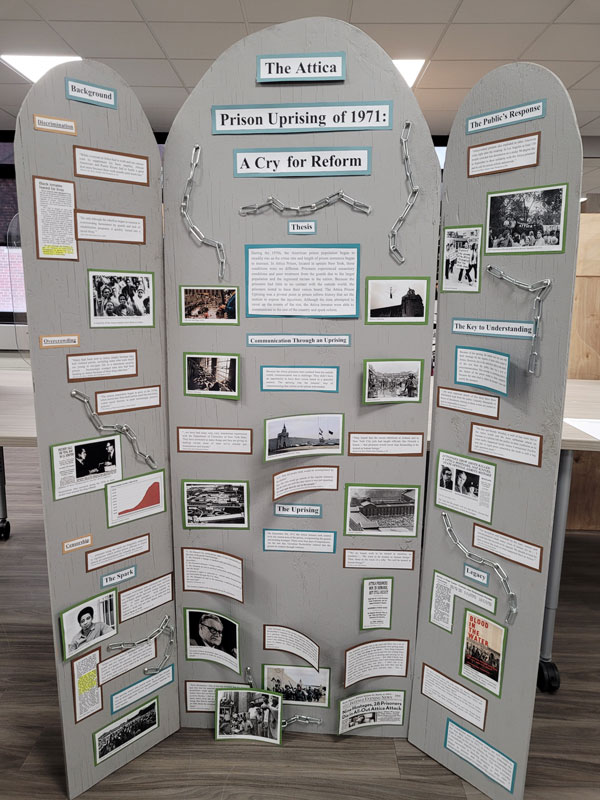Cassidy Casabona took a deep dive into the Attica prison riot and the junior developed an award winning exhibit for this year’s National History Day contest at Huntington High School.
Ms. Casabona’s exhibit titled “The Attica Prison Uprising of 1971: A Cry for Reform” will now compete in the Long Island regional finals.
“To conduct my research, I first looked at online databases to find newspaper articles about the riot,” the teenager wrote in a process paper. “There were several articles from The New York Times and The Amsterdam News that were very insightful. One source that was extremely helpful was Heather Ann Thompson’s book, ‘Blood in the Water,’ because it provided a detailed history of the incident. I then found interviews with Attica inmates, which informed me more about the conditions in the prison and how the prisoners were feeling during this time.”
On September 9, 1971 prisoners rioted and took control of the maximum security prison, which is located outside of Buffalo. While the New York State Police regained control of most of the prison hours later, 1,281 prisoners occupied a large exercise area known as D Yard and took 39 guards and prison employees hostage over a four day period.
When negotiations between officials and prisoners failed, Governor Nelson Rockefeller ordered state police and corrections officers to raid and retake the occupied area on September 13. The 3,000 rounds of gunfire that followed resulted in 10 hostages and 29 inmates being killed and another 89 individuals seriously injured. (Four others were killed earlier in the riot, including a corrections officer and three inmates.)
The rioting prisoners cited a long list of grievances ranging from overcrowding and poor living conditions, including being able to take only one shower per week and having one roll of toilet paper per month to the censorship of their letters.
“I decided to do my project on the Attica prison uprising this year because after reading ‘Just Mercy’ by Bryan Stevenson in Advanced Placement US History, I have grown more interested in prison reform,” Ms. Casabona said. “I’ve become more aware of the poor conditions in prisons and how mass incarceration has become a bigger issue in our nation. I felt this topic was perfect for this year’s theme because the Attica inmates used a riot to communicate to the public.”
The uprising was the worst prison riot in United States history. A $2.8 billion class action suit filed in 1974 against prison and state officials took 18 years to come to trial and then another five years to determine damages. Finally in January 2000 a settlement was reached in the amount of $8 million, which was divided between approximately 500 inmates based upon the degree of their injuries.
“I really enjoyed conducting research about this uprising because it gave me an opportunity to learn more about the justice system,” Ms. Casabona said. “I am really proud of my exhibit this year. I feel that I improved greatly from when I first created an exhibit as a freshman. I definitely grew as a student by participating in National History Day because I learned how to complete thorough research and then display my research in a creative way.”


